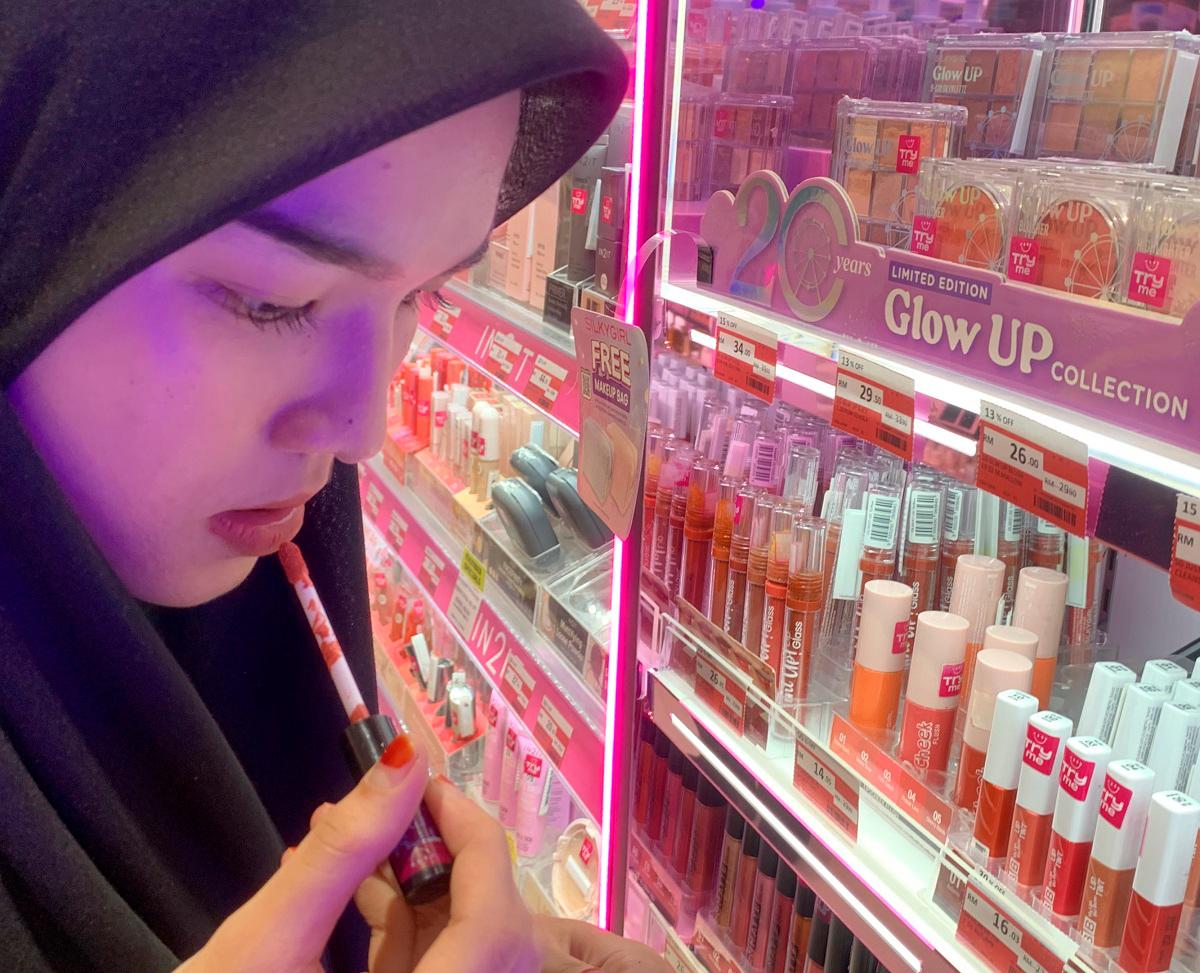PETALING JAYA: Makeup testers at beauty counters could expose users to harmful viruses, bacteria and fungi, warned a dermatologist, urging the public to avoid applying products directly to the lips, face or around the eyes.
Aesthetic dermatologist Dr Lim Ing Kien, also known as Dr Ingky on social media, said makeup testers can harbour viruses such as herpes simplex virus type 1 (HSV-1) as well as bacteria and fungi that may cause skin infections, eye conditions and allergic reactions.
“Contracting herpes simplex virus type 1 (HSV-1) from a shared lip product is possible, although rare.
“For someone to catch herpes from lipstick, the virus must be freshly deposited and immediately used by the next person,” he told theSun.
He explained that HSV-1 – the virus responsible for cold sores – can survive for several hours on moist surfaces such as lipsticks, although exposure to air and light rapidly weakens it.
“The risk is real enough that doctors strongly advise against applying testers directly to the lips.”
Lim said herpes is not the only concern, noting that makeup testers are often breeding grounds for other harmful microbes.
“Studies have found makeup testers contaminated with Staphylococcus aureus,
E. coli, Enterococcus faecalis and Pseudomonas aeruginosa,” he added.
These bacteria can cause a range of issues, from skin infections and boils to more serious conditions such as conjunctivitis.
He added that Candida and Aspergillus fungi are also common and may lead to skin rashes or fungal infections.
He said some cosmetic products are riskier than others.
“Items used on moist areas such as mascara, eyeliners, lipsticks and cream foundations
pose a higher risk.
“Cream products in jars are easily contaminated by fingers, while dry powders or sharpened pencils are slightly safer, although not completely germ-free,” he said.
He also warned that shared cosmetics could trigger allergic reactions or worsen skin conditions.
“Even if the product isn’t infected, your skin may still react to residues left behind by others such as sweat, oil or allergens,” he said.
“I’ve seen cases of allergic contact dermatitis and acne breakouts caused by shared testers.”
On how long pathogens can survive on makeup products, Lim said HSV-1 can linger for several hours, depending on humidity, temperature and the surface type.
“Lipsticks with alcohol or oil bases may reduce the survival time, but it’s not a guarantee,” he added.
When asked about hygiene practices in stores, he said they can be “very effective, if done properly”.
Alcohol swabs containing 70% isopropyl alcohol can eliminate more than 99% of surface germs and disposable applicators help, provided they are not reused.
“But re-dipping them defeats the purpose,”
he said.
“These hygiene protocols only work if staff follow them consistently, which isn’t always the case in busy retail environments.”
Lim advised consumers never to apply testers directly to the lips, eyes or face.
“Test lipsticks on your arm or wrist, and always ask for a fresh applicator, or better yet, bring your own.
“Request that staff sanitise the product in front of you and avoid testing during peak hours when lapses are more likely.”
He also said hygiene practices have improved since the Covid-19 pandemic.
“Many stores have introduced more frequent cleaning, adopted ‘no-touch’ policies and implemented virtual try-on tools,” he said.
“Virtual or AI-based try-ons significantly reduce health risks and are increasingly popular with younger consumers.”
Even professional makeup artists uphold strict hygiene routines.
“They sanitise their tools between clients, use disposable wands and never double-dip,” he said.
“Consumers should apply the same standards at home, especially when sharing makeup.”









